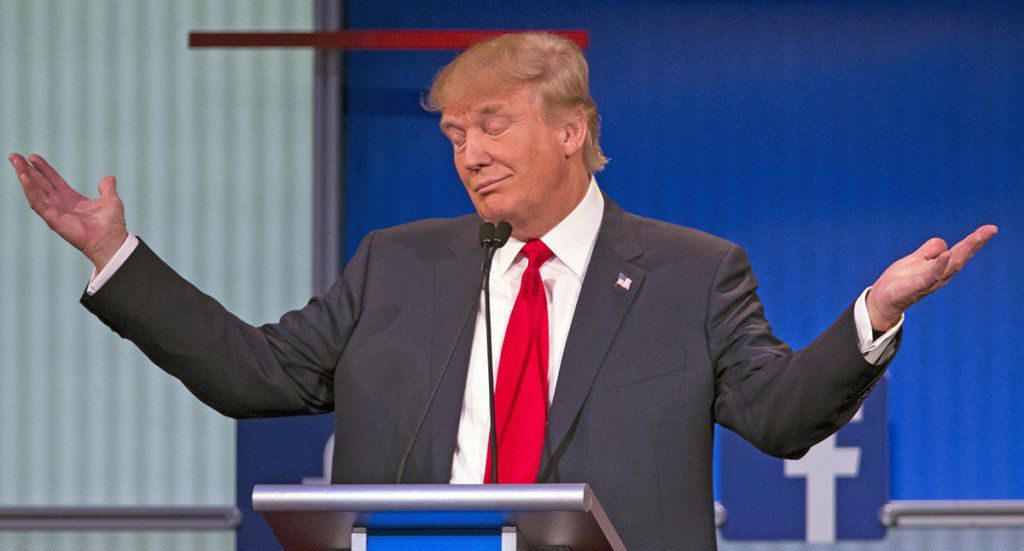This morning I somehow ended up in the scant “positions” section of Republican presidential candidate Donald Trump’s campaign website on the “Pay for the Wall” page, hoping to settle in my mind once and for all exactly how The Donald proposes to get our neighbor to the south to foot the $5-$10 billion bill for a structure that’s financially and geographically infeasible — not to mention ineffective.
What I found was an argument so incoherent, it actually surprised me.
In a memo to the Washington Post in April outlining his wall plans, Trump cited Section 326 of the Patriot Act — the “know your customer” provision — which compels financial institutions to demand identity documents before opening accounts or conducting financial transactions. Trump says the law authorizes the executive branch to issue detailed regulations on the subject, found at 31 CFR 130.120-121.
So, Trump will attempt to halt money transfers, green cards and work visas to Mexico, close the border, and cut aid to the country unless Mexican officials agree to build the wall. “It’s an easy decision for Mexico,” Trump wrote. “Make a one-time payment of $5-$10 billion to ensure that $24 billion continues to flow into their country year after year.”
This puzzling introduction — which seems to be an attempt to justify the plan of action that follows — is remarkable not only for its incoherence, but also for the fact that the twice-mentioned 31 CFR 130 does not exist. The regulation Trump’s people were trying to refer to is 31 CFR 103.121, presumably, but even this is incorrect. That regulation was re-issued years ago as 31 CFR 1020.220.
I was not the first person to spot the error. It was pointed out by multiple sources months ago — including in the National Review’s expert debunking of the plan from a true conservative’s perspective — yet the web page remains unchanged.
This error points to more than just an innocent typo. Between the laziness of the research, the incoherence of the argument, and the fact that setting the record straight seemed unimportant to the Trump campaign, we’re left with the realization that the justification for building the wall simply doesn’t matter as much as actually building it. And doing something without actually having a reasonable justification is the definition of insane. In this case, it’s also hateful and a waste of the American taxpayer’s money.
It’s probably not a revelation to anyone that Trump’s view on this is a tad simplistic. The topography of the 1,954-mile-long border area is rugged, and in many places a contiguous wall just wouldn’t work. On top of that, the wall plan would involve seizing property from private ranchers. Even many Trump supporters — like Texas Governor Rick Perry— doubt that the wall is feasible.
“It’s a wall, but it’s a technological wall, it’s a digital wall,” said Perry, quoted in The Atlantic last month. “There are some that hear this is going to be 1,200 miles from Brownsville to El Paso, 30-foot high, and listen, I know you can’t do that.”
I would argue that Trump’s wall is a mental one, and that it’s already been built. He’s laid bare the American faultlines that have been just barely below the surface for so long.
When it comes to the actual, physical wall, Trump either has no idea what he’s doing, or he’s lying. Maybe he knows that the wall isn’t a reasonable idea. Yet I wouldn’t put it by him to try and build it anyway, should he be elected, if for no other reason than to put nay-sayers like me in my place.
Because he’s got a lot to prove to the world.
Peter Vancini can be contacted at pvancini@valleyadvocate.com.



